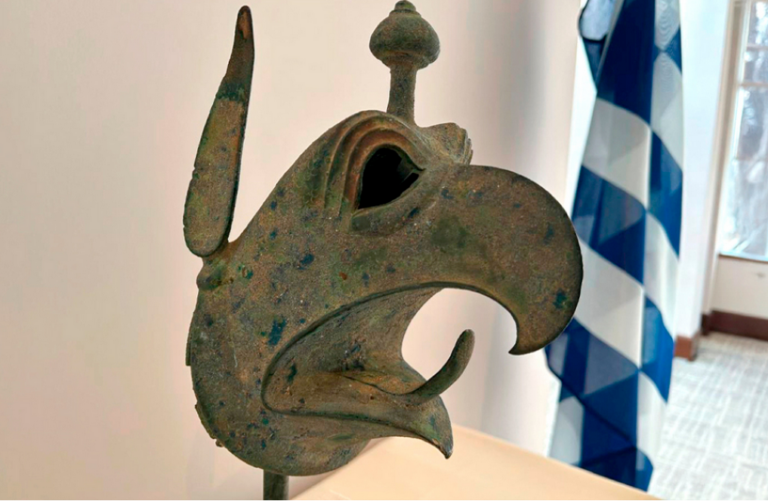It took more than a century from the time the head of the Griffin was first discovered in Ancient Olympia for it to return to its rightful place as a rare and exceptional 7th-century BCE artifact that once adorned a bronze tripod cauldron. The particularly challenging process of repatriation from the Metropolitan Museum of Art in New York (the renowned Met) required careful diplomatic maneuvers, clear knowledge, documentation, and the active involvement of the Greek Ministry of Culture and Minister Lina Mendoni.
The Greek-American prosecutor Matthew Bogdanos has played a crucial role in the repatriation of the Griffin and other Greek treasures. He has made it his mission to reclaim as many illegally acquired artifacts from museums as possible, fundamentally changing the way these institutions operate.
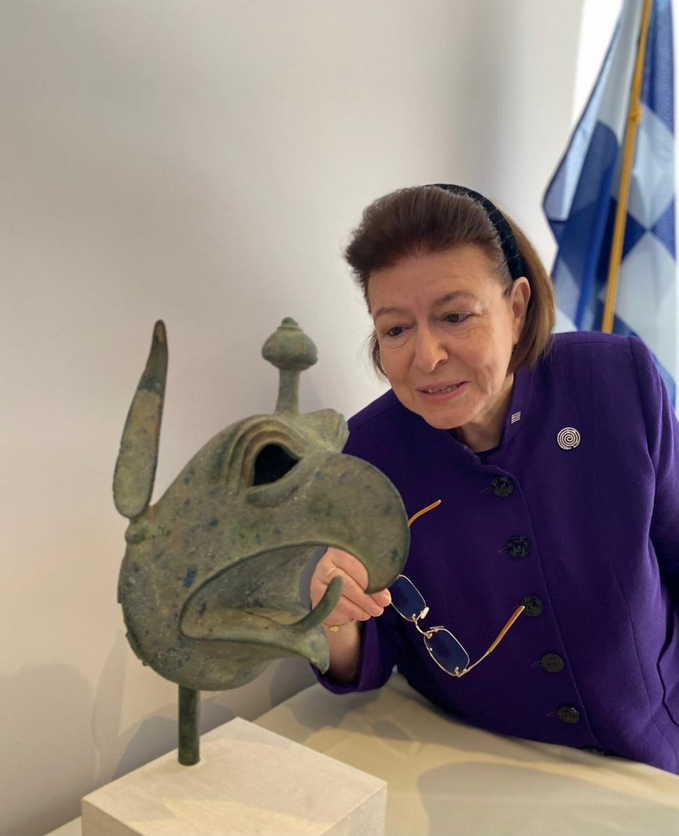
How the Theft Was Proven
It all began on a cold December day in 1914 when a heavy storm carried soil and debris, covering the banks of the Kladeos River. This forced Themistocles Karachalios, the then-curator of the Museum of Ancient Olympia, to order a cleanup. As workers removed the accumulated earth, they uncovered a remarkable head. Immediately, the curator and archaeologists recognized it as a rare treasure, resembling the griffins that once decorated votive cauldrons in ancient times.
Due to the significance of the find, its assessment was expedited, and the ancient head was scientifically documented in a publication that included photographic records in the Archaeological Bulletin—the official publication of the Archaeological Service—the following year, in 1915. However, for many years, the cauldron’s whereabouts remained unknown. It was not listed among the museum’s exhibits, though some accounts suggested it adorned the curator’s library.
In other words, the treasure remained essentially unregistered until German excavators in Olympia conducted a thorough but unsuccessful search, eventually declaring its official loss. Evidence suggests that the valuable artifact was found by a looter who sold it to the antiquities dealer Theodoros Zoumboulakis, a member of a well-known family.
Zoumboulakis, in turn, passed it on to the antique dealer Joseph Brummer, who kept it for a decade—long enough for its origins to be obscured—before transferring it to the famous American antiquities dealer and gallerist Joseph Brummer. From him, many treasures, including Early Cycladic figurines, were acquired by William Charles Baker for his collection, which was ultimately donated to the Metropolitan Museum of Art in New York.
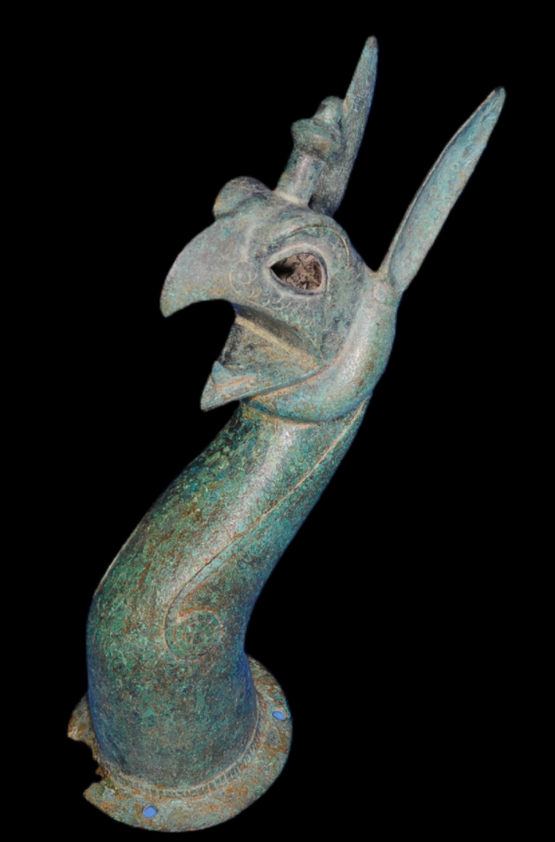
When this particular treasure was displayed at the iconic New York museum, it was explicitly labeled as originating from Ancient Olympia. This alone confirmed that it was the very artifact stolen from the site, as its illegal export had been documented and at no point had it followed a lawful acquisition process.
Fortunately, the Documentation Directorate of the Ministry of Culture ensured that the loss was recorded, officially identifying the treasure within the institution’s digitized collection as the renowned Griffin of Ancient Olympia. This documentation effectively paved the way for its reclamation.
This artifact was one of the most significant treasures held by the Met, not only because of its rarity—fewer than 600 cauldrons of this size are estimated to exist—but also due to its remarkable craftsmanship as a highly significant votive offering. Notably, no similar artifact has been found to date, as comparable bronze statues were of smaller dimensions.
The Immense Significance of This Treasure
The Minister of Culture highlighted the importance of this treasure during the repatriation ceremony at the Archaeological Museum of Ancient Olympia. In her address, she emphasized the broader significance of returning artifacts of equal historical and cultural value to their places of origin. She stated, “Today’s ceremony underscores the true and emotional importance of the repatriation of this Griffin head to the Museum of Ancient Olympia, back to the place where it rightfully belongs.”
More than 2,500 years ago—between 650 and 625 BCE—certain individuals chose to dedicate a bronze tripod cauldron, adorned with three griffin heads, to Zeus, the father of the gods. This masterpiece of ancient Greek metalwork was a remarkable votive offering. Every repatriation is a significant moment for the entire Ministry of Culture. The return of any cultural artifact that was illegally removed from Greece is deeply connected to our cultural identity.
Those who live in the place where a cultural treasure is repatriated can best understand and feel its true significance. You are the custodians of this civilization, which has thrived and evolved in this land for thousands of years. Each individual repatriation reminds us of our greater national goal: the return and reunification of the Parthenon Sculptures in the land that gave birth to them, beneath the Attic light.
May the Griffin, now returned home—this hybrid creature, combining the body of a lion with the wings and head of an eagle—serve as a good omen, bringing the strength and presence needed to ensure that, one day soon, Phidias’ masterpieces will also return to Athens.
However, this was not the only recent repatriation. Prior to this ceremony, 11 ancient artifacts had already been returned following a decision by the New York District Attorney’s Office. Before the repatriation ceremony, Assistant District Attorney Matthew Bogdanos was awarded the Commander of the Order of the Phoenix medal in recognition of his contributions.
Of Greek descent, Bogdanos made history as the U.S. Army colonel who successfully repatriated thousands of looted antiquities to the Baghdad Museum. As an assistant district attorney in New York, he has worked tirelessly to recover numerous antiquities, including many of Greek origin.
The Smuggling Networks
As The New York Times reported, Matthew Bogdanos was the first to raise serious questions about how the Met acquired its treasures. Through the Steinhardt case, he exposed the entire system of illegal antiquities acquisition by leading U.S. museums. The Greek-American assistant district attorney in Manhattan took on the powerful Met, working with his Antiquities Trafficking Unit to reclaim the golden sarcophagus and hundreds of other looted treasures from Iraq, Egypt, Italy, and Greece.
He boldly confronted wealthy collectors like Michael Steinhardt, who owned countless illegally obtained artifacts, and began investigating the Met’s collection, much of which had been acquired unlawfully. During the recent return of several significant treasures to Italy, Bogdanos explained in detail how smuggling networks operate—by forging documents and obscuring provenance, making it nearly impossible to trace the origins of artifacts, which museums often failed to declare.
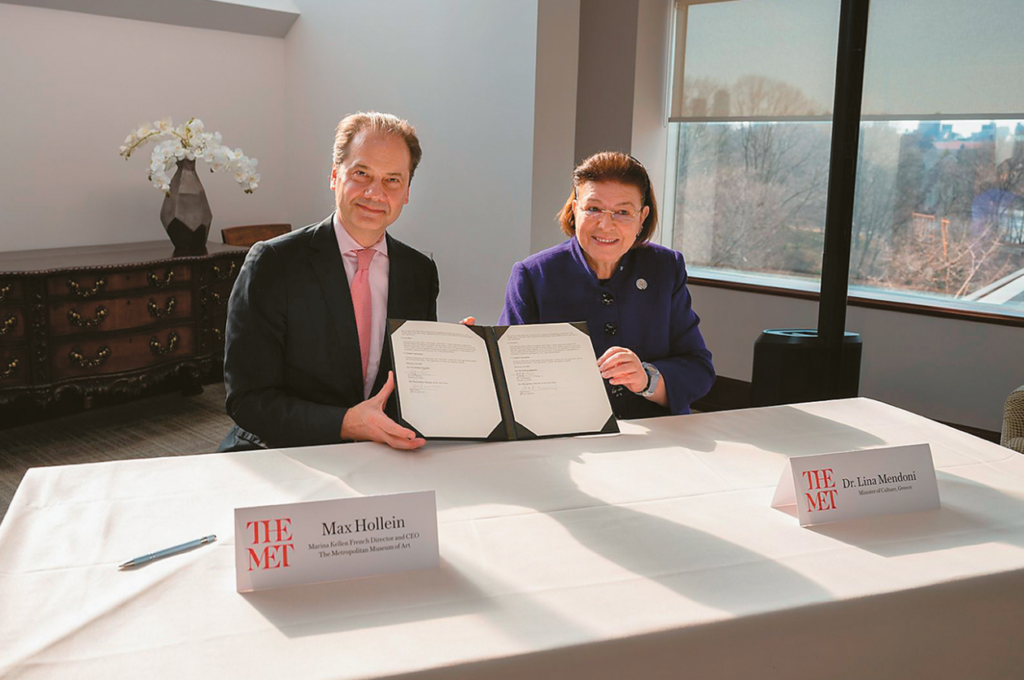
This elite circle included seemingly untouchable individuals—private collectors, auction houses, and renowned institutions. Yet, the Greek-American prosecutor stood his ground, forcing top-tier museums to admit that not all their acquisitions had followed legal procedures. His efforts had already been recognized by the U.S. government, which awarded him the National Humanities Medal for recovering treasures after the looting of the Iraq National Museum.
He later fought to reclaim the famous Euphronios Krater, which had been looted from an Etruscan tomb—one of the most significant antiquities smuggling cases in history. Winning this case was an unexpected victory that changed the way museums operate worldwide.
Bogdanos’ Role in Changing Museum Policies
Matthew Bogdanos not only forced the Metropolitan Museum of Art to return the Euphronios Krater to Italy in 2008, but he also secured the repatriation of 20 additional significant artifacts from its collection. The krater was part of the infamous Steinhardt Collection, which Bogdanos exposed—along with the vast collection of Shelby White, who had acquired countless antiquities with billionaire Wall Street investor Leon Levy, and the ruthless businessman and collector Leonard Stern.
How the Met Adapted to the Pressure
As a result of Bogdanos’ efforts, leading museums like the Met were forced to change their approach, demonstrating a newfound willingness to comply with ethical guidelines. Following the seizure of 74 artifacts, the museum even hired Lucian Simmons last year to oversee repatriations and repair its tarnished reputation.
Simmons, who previously worked at Sotheby’s as a senior expert and head of restitution, argued that repatriations should not appear as forced police actions but as voluntary decisions by the museum itself. Instead of high-profile legal battles led by prosecutors like Bogdanos, museums were encouraged to conduct their own internal investigations and proactively return artifacts proven to be looted or illegally excavated.
This meant Simmons was responsible for reviewing a collection amassed over 150 years, spanning different historical periods and museum wings. As a consequence, entire donated collections—including Stern’s—came under scrutiny. Recognizing the diplomatic challenges, Simmons recently organized a special symposium with experts presenting new findings on Cycladic collections. Greek representatives, including Minister of Culture Lina Mendoni, attended the event.
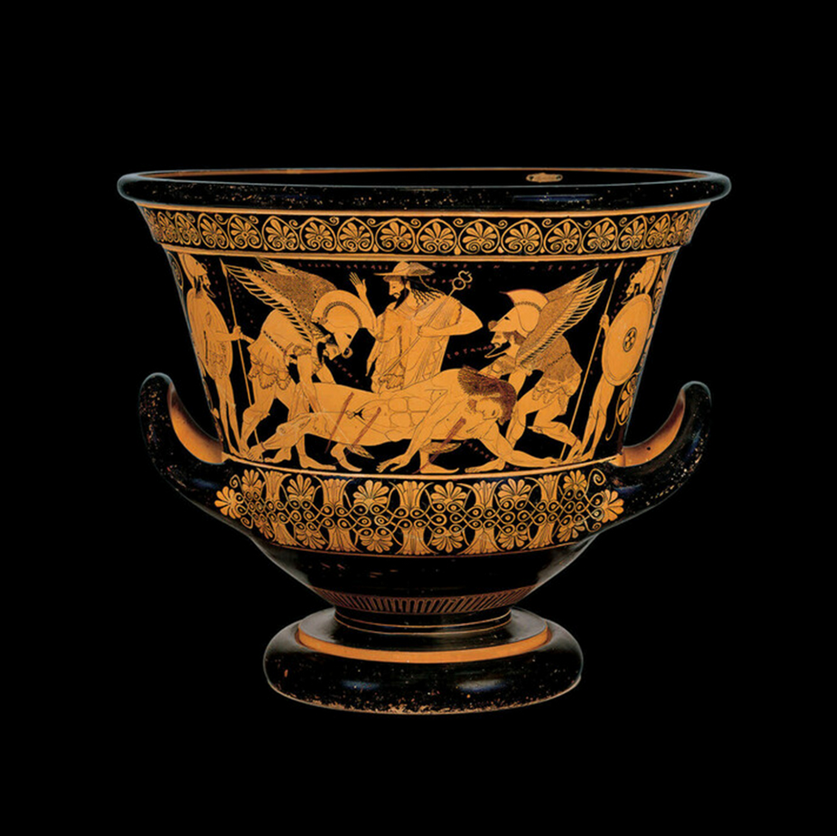
The Griffin’s Return
Eager to maintain a positive image during this critical period, the Met swiftly repatriated the Griffin’s head in a formal ceremony. The museum’s director, Max Hollein, emphasized that this was “a very special moment for the collaboration between the Met and the Greek Ministry of Culture.” He described the repatriation as “one of the most significant returns of an emblematic piece from the museum’s Greek and Roman collection.”
Hollein acknowledged that the bronze griffin head had been thoroughly investigated, with conclusive evidence proving it was removed illegally from Greece. He further underscored the importance of “international cooperation in protecting and promoting cultural heritage,” highlighting the strengthened partnership between the Met and the Greek Ministry of Culture.
New Exhibition in 2026
The Minister of Culture responded with a warm greeting, stating that “this act is proof of the museum’s commitment to scientific integrity, professional ethics, and respect for cultural heritage. It also reflects a broader shift in museum practices worldwide—emphasizing due diligence in assessing not only the legality but also the ethical foundation of their collections.”
“This dynamic approach, which we are pleased to see gaining momentum among leading cultural institutions, recognizes the importance of sincere and constructive collaborations between museums and the organizations that manage cultural heritage. Greece is among the countries whose cultural treasures have been stolen and illegally trafficked. I firmly believe that all antiquities unlawfully removed from any country must return to their homeland and rightful owners as an essential part of their collective identity.”
Both parties pledged to do everything in their power to promote shared values and Greek culture—not only by collaborating on issues related to antiquities but also by working in the same direction in cultural diplomacy through the exchange of treasures and joint events. Within this framework of cooperation, an exhibition titled “Across Wine-Dark Seas: Art and Identity beyond Ancient Greece” will be organized at the MET.
It is no surprise that the exhibition will open with a series of Greek artifacts that, this time, will adorn the museum’s display cases as loans, with special symbolic emphasis placed—where else?—on the Griffin. Perhaps this serves as an example of how the British Museum should act by returning the Parthenon Marbles, in a gesture of high culture, collaboration, and consensus.
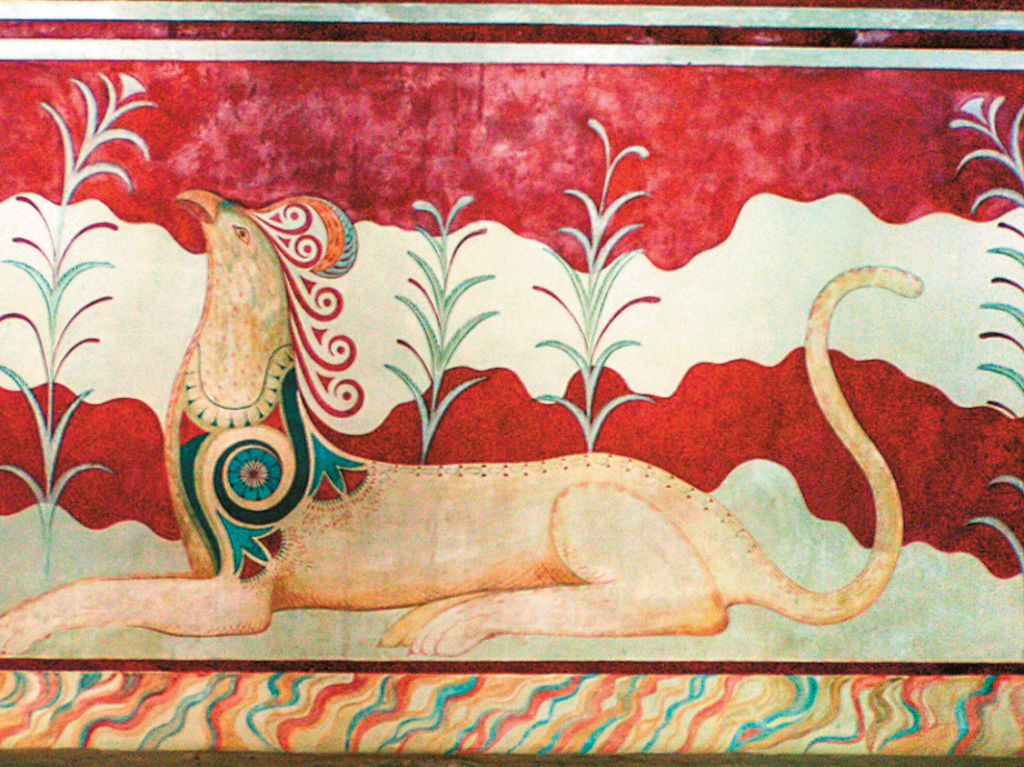
The Mythical Beast of Antiquity
Griffins were emblematic creatures of antiquity, likely originating from Egypt and Mesopotamia. They can be seen dominating Minoan frescoes and even prehistoric decorations at Akrotiri, such as the impressive Potnia Theron fresco. This mythical beast features the body of a lion, the head and wings of an eagle, and in some depictions, even a serpent’s tail. A griffin, for example, prominently adorns the famous armor of Athena and is also depicted pulling Apollo’s chariot toward Hyperborea.
Fierce griffins were also known to guard Zeus in Aeschylus’ Prometheus Bound. As such, they were closely associated with the sun god. One particularly striking depiction of this sacred creature appears on seal rings, such as one from the Late Bronze Age, where a flying griffin is shown leaping upward with its enormous, impressive wings spread wide in contrast to its small body—a peculiar being that encapsulates beauty and strength, dominance and freedom, the very elements so profoundly highlighted in ancient philosophy and art.
Ask me anything
Explore related questions
